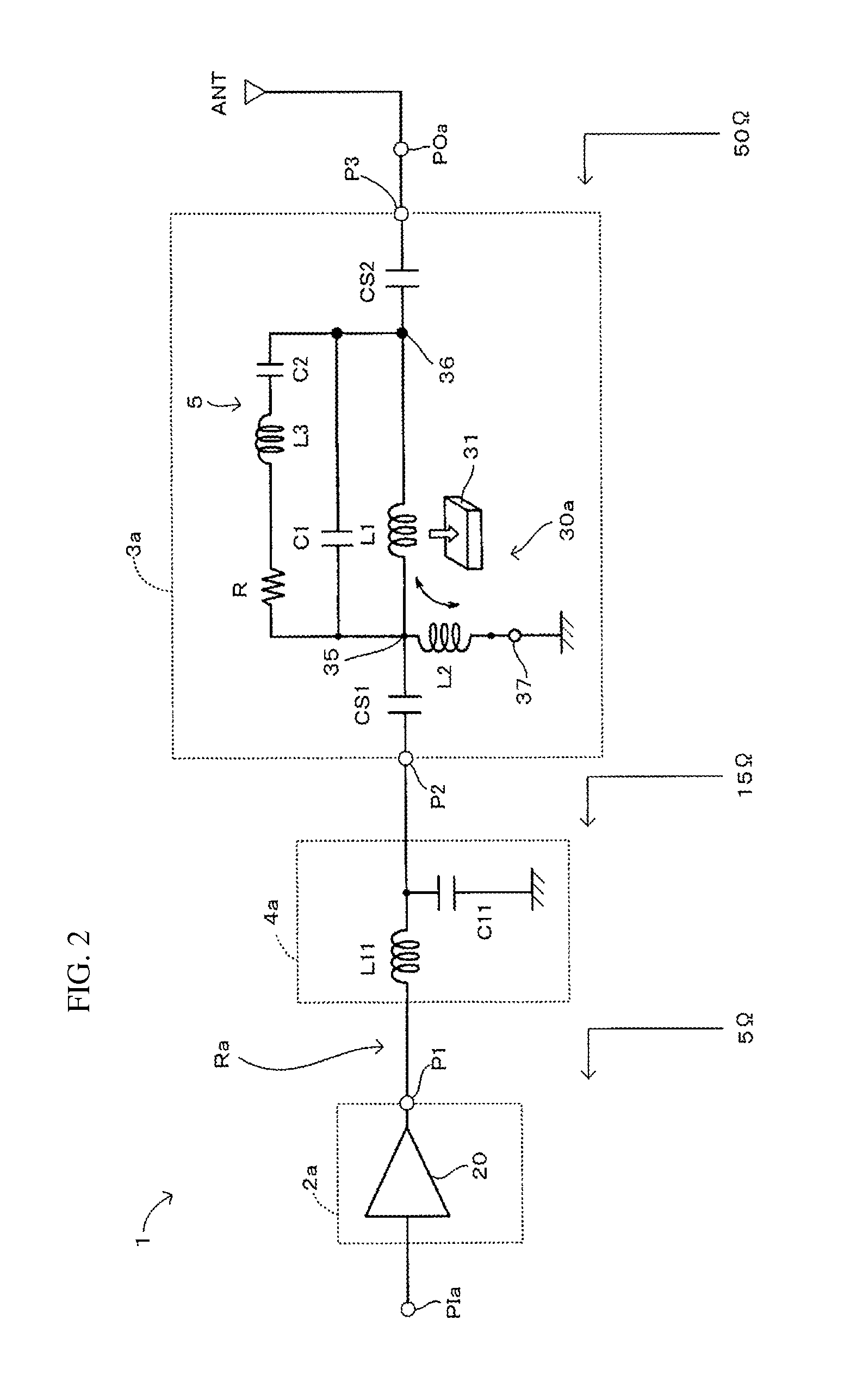Circuit module
a circuit module and module technology, applied in the field of circuit modules, can solve the problems of reducing the efficiency of the circuit module b>500/b>, reducing the design flexibility, and not conducting close examinations concerning this issue, so as to reduce the efficiency of the circuit module 500, increase efficiency, and reduce the consumption of current.
- Summary
- Abstract
- Description
- Claims
- Application Information
AI Technical Summary
Benefits of technology
Problems solved by technology
Method used
Image
Examples
first embodiment
[0037]A first embodiment of a circuit module of the present invention will be described below with reference to FIGS. 1 through 5. FIG. 1 is a block diagram illustrating the first embodiment of a circuit module of the present invention. FIG. 2 is a circuit block diagram illustrating the configuration of a transmission route included in the circuit module shown in FIG. 1. FIG. 3 is an exploded perspective view illustrating ferrite and magnetic elements forming an isolator of a non-reciprocal circuit. FIG. 4 is a diagram illustrating a state in which the isolators are arranged. FIG. 5 is a graph illustrating the impedance characteristics obtained when the isolators are arranged in the state shown in FIG. 4.
[0038]A circuit module 1 shown in FIG. 1 is a power amplifier module which is formed by disposing amplifying means 2, regulating means 3, matching means 4, and so on, on a substrate made of, for example, a resin or ceramics. The circuit module 1 is used in a transmission circuit of ...
first modified example
[0060]A first modified example of the arrangement state of the isolators will be discussed below with reference to FIGS. 6 and 7. FIG. 6 is a diagram illustrating a first modified example of a state in which the isolators are arranged, and FIG. 7 is a graph illustrating the impedance characteristics obtained when the isolators are arranged in the state shown in FIG. 6.
[0061]As shown in FIG. 6, in the first modified example, the magnetic poles N and S of the permanent magnets 32 of the isolators 30a and 30b are aligned so that the directions from the magnetic pole N to the magnetic pole S will be the same. According to this arrangement state of the isolators 30a and 30b, too, as shown in FIG. 7, as the distance x between the isolators 30a and 30b decreases, the DC magnetic fields H intensify with each other more closely, and the input impedance of each of the non-reciprocal circuits 3a and 3b is reduced.
second modified example
[0062]A second modified example of the arrangement state of the isolators will be discussed below with reference to FIGS. 8 and 9. FIG. 8 is a diagram illustrating a second modified example of a state in which the isolators are arranged, and FIG. 9 is a graph illustrating the impedance characteristics obtained when the isolators are arranged in the state shown in FIG. 8.
[0063]As shown in FIG. 8, in the second modified example, the isolators 30a and 30b are disposed such that a straight line perpendicularly passing through both magnetic poles of the permanent magnets 32 of one isolator 30a intersects with a straight line perpendicularly passing through both magnetic poles of the permanent magnets 32 of the other isolator 30b. According to this arrangement state of the isolators 30a and 30b, too, as shown in FIG. 9, as the distance x between the isolators 30a and 30b decreases, the DC magnetic fields H intensify with each other more closely, and the input impedance of each of the non-...
PUM
 Login to View More
Login to View More Abstract
Description
Claims
Application Information
 Login to View More
Login to View More - R&D
- Intellectual Property
- Life Sciences
- Materials
- Tech Scout
- Unparalleled Data Quality
- Higher Quality Content
- 60% Fewer Hallucinations
Browse by: Latest US Patents, China's latest patents, Technical Efficacy Thesaurus, Application Domain, Technology Topic, Popular Technical Reports.
© 2025 PatSnap. All rights reserved.Legal|Privacy policy|Modern Slavery Act Transparency Statement|Sitemap|About US| Contact US: help@patsnap.com



